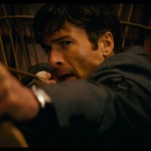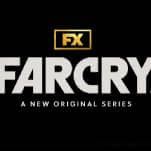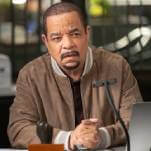By contrast, the diverse, imaginative pieces on Cinema16: European Short Films make a strong case for the art of the short. Collecting samples from across continents and decades—including early work by the likes of Lars von Trier, Lynne Ramsay, Jan Svankmajer, and Christopher Nolan—Cinema16 contains a modicum of forced whimsy and insufferable pretension, but that's less prevalent than the moments of visionary splendor. Three films in particular stand out: Roy Andersson's "World Of Glory," a creepy deadpan comedy narrated by a middle-class businessman deeply affected by unimaginable horror; Bálint Kenyeres' "Before Dawn," a masterfully choreographed single-shot, deep-frame wonder in which helicopters and refugees chase each other through a dimly lit field; and Run Wrake's "Rabbit," an animated version of a Dick & Jane primer that takes a scarily surreal turn.
The fourth issue of the McSweeney's DVD magazine Wholphin generally mines a different vein than Cinema16—more documentaries and Sundance-style indies, less abstract art—but the films are strong, linked by common themes of cultural integration and displacement. The set kicks off well with "Two Cars, One Night," a vivid memory-play about childhood in the middle of nowhere, written and directed by Eagle Vs. Shark's Taika Waititi. The pitch-perfect slice of life—precisely capturing how children communicate with big boasts and non sequiturs—has echoes in the documentary "Heavy Metal Jr." (about Scottish pre-teens living out their parents' rock 'n' roll dreams at a county fair) and in the comic vignette "Heavy Metal Drummer" (about a hard-rocking Moroccan Muslim teenager). Some of the shorts on Wholphin #4 verge on the twee, but there's a sense throughout of people trying to redefine the rules in too-familiar places.
But for real redefinition, nothing tops the avant-garde shorts on Xperimental Eros, which use pornography as raw material for social commentary and puckish manipulation. Films like Naomi Uman's "Removed" (which replaces the female characters in an old Italian porn film with whitish blobs), Lewis Klahr's "Downs Are Feminine" (which assembles cut-outs from girlie mags into distorted human figures, engaging in riotously unnatural acts), and Thomas Draschan and Stella Friedrichs' "The Influence Of Ocular Light Perception On Metabolism In Man And Animal" (a collage of images from industrial films and nudie cuties, cut together in disorienting rhyming compositions) raise questions about whether the visual grammar of erotica remains effective when some key elements are changed. More to the point, films like Mark Street's "Blue Movie" and Peggy Ahwesh's "The Color Of Love" obscure adult-movie footage with scratches, burns, and acid washes, forcing viewers to peer through the fog to get the goods, all while wondering what they're trying to see.
Key features: Director interviews on Reel Talent, commentary tracks on Cinema16, and vintage stag films on Xperimental Eros.









































